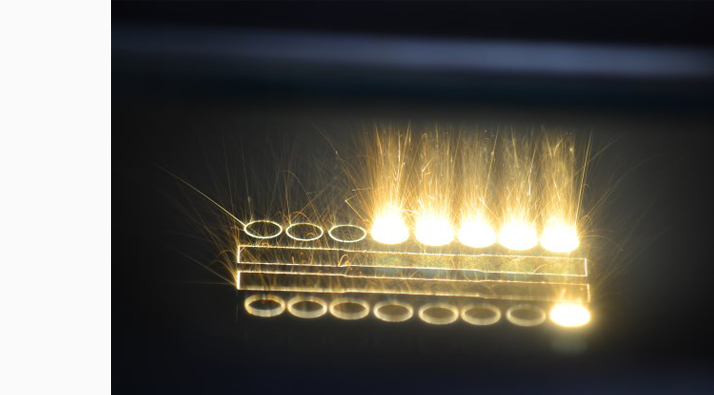
3D printing revolutionizes die engineering
Schuler manufactures die segments for hot stamping using laser melting, ensuring better part properties
Hot stamping dies require channels for coolants, so that the annealing sheet metal can be rapidly brought to a temperature below 200 degrees Celsius. Previously, coolant channels usually had to be drilled straight into the die, so a continuous position on the surface is made almost impossible, particularly when it comes to complex shapes. But now, with the help of 3D printing, Schuler is manufacturing prototype dies with channels running in an improved near net shape – therefore ensuring an equally fast cooling of all component areas and, as a consequence, improved part properties.
"The optimized cooling channel geometry makes the cooling of the die more homogenous and efficient", explains Udo Binder, Head of the Intelligent Tooling Solutions Division at Schuler. "3D printing opens up new possibilities in the design of the cooling channels, so that they contribute to even cooling."
Schuler uses laser melting as an additive manufacturing process. The base material is the same steel used in conventional hot stamping dies – albeit in the form of powder that is applied layer by layer and joined by laser welding. The result is a die segment that exhibits mechanical-technical properties of the actual die by up to 95 percent.
Before, Schuler carried out comprehensive examinations so as to determine ideal process parameters and the optimum composition of the powdered material. Extensive tests of the die segment for tensile strength and specific density followed. It is currently being tested for wear and series production. "The construction of hot stamping dies is practically predestined to be a new area of application for 3D printing", summarizes Division Head Udo Binder. "We're ready for it."
Visitors can learn more about 3D printing and other innovations in die engineering by Schuler and Aweba at the Aweba stand at the EuroBLECH trade fair, from 25 to 29 October 2016 in Hanover, Germany (no. L127 in hall 27). The Schuler stand with the entire product program is also located in the same hall (stand no. F82).
